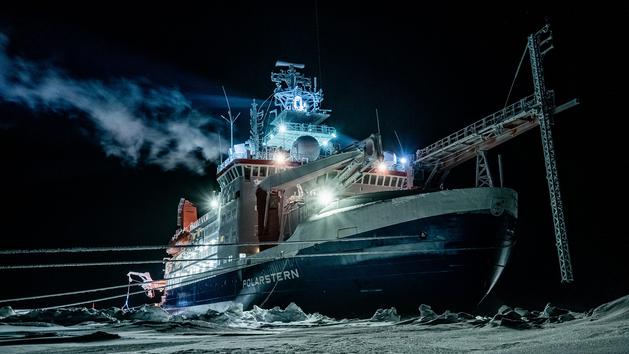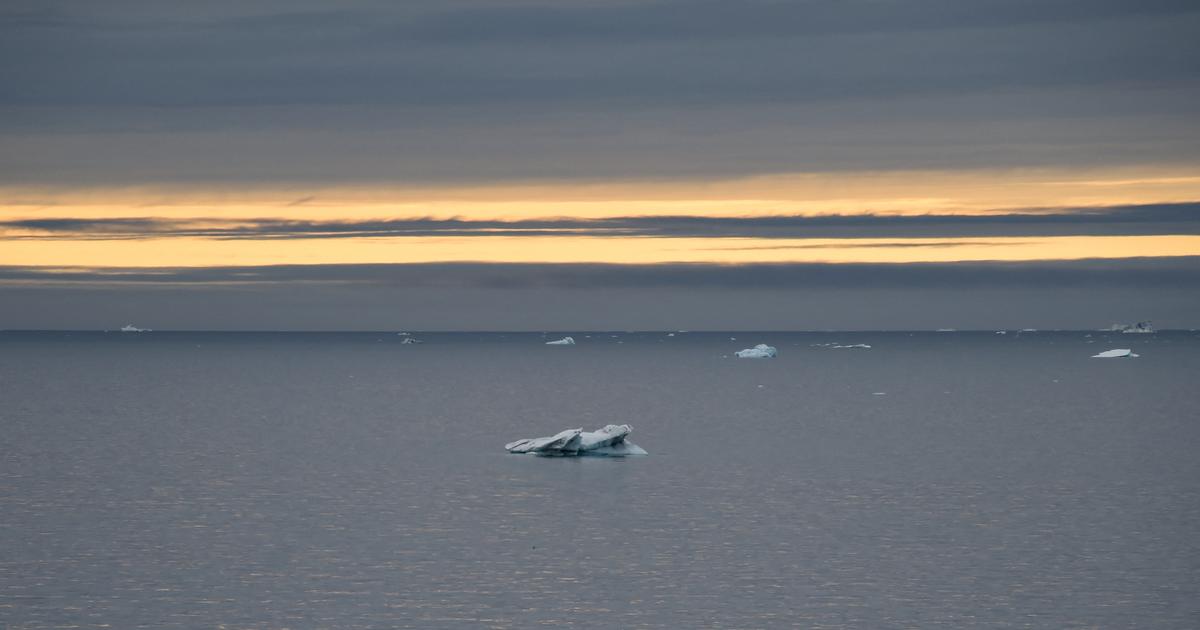Left a year ago from Tromsø, in Norway, in order to reach the North Pole, the
Polarstern
expedition
is back this Monday, October 12 in Germany, with one observation: the ice floes in the Arctic are melting "
at a dramatic speed
" .
At the end of 389 days at sea, the icebreaker
Polarstern
of the German institute Alfred-Wegener returned to its home port of Bremerhaven, in north-west Germany, in the early morning, accompanied by a fleet of boats and a morning audience gathered on the quays.
Read also: The melting of the Arctic sea ice weakens the polar bear
“
He's back.
I have heartbeats, I have waited so long for this moment
”, declared Antje Boetius, the director of the institute before the sirens of the
Polarstern
and the surrounding boats
sounded
in this port at the mouth of the river Weser which flows into the North Sea.
A press conference should be held in the middle of the day.
The largest expedition ever to the North Pole returned to Germany on Monday.
PATRIK STOLLARZ / AFP
When it comes time to return, the atmosphere within the international MOSAIC expedition is far from euphoric as scientists have been able to grasp the extent of climate change in the vast Arctic Ocean.
"
We watched how the ice floes are dying
" in summer, expedition leader Markus Rex told AFP.
For this climatologist and physicist, the finding is clear.
"
If climate change continues like this, then in a few decades we will have an ice-free Arctic in the summer
."
"Impressive" developments
During the outings on the ice floe to take measurements or take samples, the entire expedition was able to observe this development which the researcher considers "
impressive
".
"
Directly at the North Pole, we found (in summer) melted, thin, crumbly ice,
" Mr. Rex testified, also referring to "
surfaces of liquid water as far as the eye can see, up to the line of horizon
”.
A diagnosis confirmed by satellite observations in the United States which revealed that the summer sea ice had melted to the second smallest area on record, after 2012. In winter, when they faced absolute night for several months, the scientists have also measured much warmer temperatures than a few decades ago.
The mission, endowed with 140 million euros, saw several hundred experts and scientists from 20 different countries take turns on the ship which slipped with the ice according to the polar drift, this ocean current which s' flows from east to west in the Arctic Ocean.
To carry out the research, a camp was established, moored to a piece of ice floe and made up of four scientific stations within a radius of up to 40 km around the boat.
The experts collected more than 150 terabites of data as well as numerous samples of ice and water.
They promise to deliver valuable information to understand “
the complex processes
” at play at the North Pole that lead to more accelerated global warming in this region than in the rest of the world.
Full analysis of this data should take a year or two.
The goal is to develop climate prediction models to determine what heatwaves, heavy rains or storms will look like in 20, 50 or 100 years.








